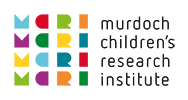1. Engage and explore
a) Define and build consensus on what needs to change for whom:
What do local data tell us? This local data may include Australian Bureau of Statistics (ABS), Census data by locality, sociodemographic profile of clients of community health services etc.
What do local families and children tell us? Idea: tap into any existing mechanisms to connect directly with local families and children. Consider partnerships with local councils, community organisations and groups. Informal meet-and-greet sessions as well as interviews and focus groups can help you to hear direct about the experiences and priorities of local families. Observing health services in action can also help you to understand some of the realities of service provision in your area.
What are the needs or gaps identified? Workshop: once the data from the above points have been gathered the next step is to bring key stakeholder groups together (e.g. practitioners, service organisations, as well as local family/community champions etc.) to act as an Advisory Group and consider the context and identify priorities for improvement. Add detail on possible meeting objectives, success points, PowerPoints…
b) Select and adopt a program of practice:
Does an integrated Child and Family Hub fill the gap and meet the need?
Is a Child and Family Hub a good fit for your context e.g., do you have an existing Community Health Service with space?
What components of the Hub can be implemented now, what components later?
c) Consider likely enablers and barriers, assess readiness:
Develop a theory of change with local stakeholders and family members with lived experience, identify enablers and barriers to implementation (noting these will need to be monitored throughout the development and implementation).
Assess ways in which your organisation is ready to implement a Child and Family Hub. Workshop 2: Provide a program logic model to complete.
d) Set up an implementation team:
Gather people in your organisation and other relevant organisations to support implementation, don’t forget to include the voice of family members and children and those with lived experience of adversity in the implementation team. Potential members may include:
families with children in target age range,
a diverse mix of families including those with a range of life challenges/experiences and identities e.g. ATSI, LGBTIQA+, CALD, etc.
2. Plan and prepare



















